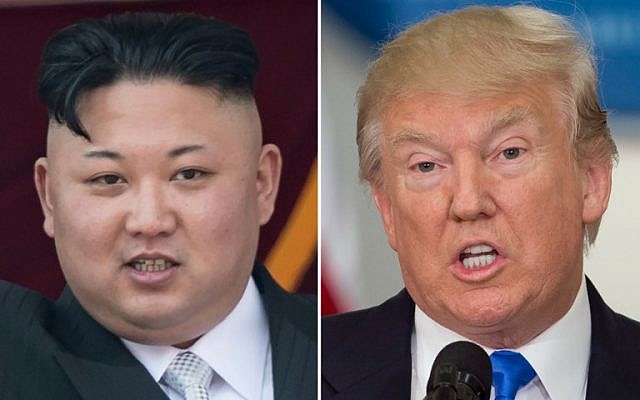Tag Archives: nuclear attack
CIA cautions North Korea could nuke US within a ‘handful of months’

North Korean leader Kim Jong-Un (L) and US President Donald Trump (R). (AFP Photo/Saul Loeb and Ed Jones)
Agency’s director says ‘many things were possible’ in terms of removing Kim, acknowledges possible disastrous consequences of US striking first
N Korea threatens to ‘invade US’ unless S Korean military exercises aren’t halted

A U.S. Marine Corps C-130 Hercules aircraft leads a formation of F/A-18C Hornet strike fighters and A/V-8B Harrier jets over the aircraft carrier USS George Washington (CVN 73) in the East Sea of Korea © Charles Oki / U.S. Navy photo / Handout
Russian strategic bombers near Canada practice cruise missile strikes on US

In this August 7, 2008 photo, a Russian TU-95 bomber, or Bear, lands at a military airbase in Engels, some 559 miles south of Moscow. Reuters
Dick Cheney: U.S. Will Suffer ‘Far Deadlier Attack’ Within Next Decade
China’s Deterrent Plan for Nuclear Strike on America

Chinese calculations for nuclear attacks on the U.S. are chillingly macabre.
“Because the Midwest states of the U.S. are sparsely populated, in order to increase the lethality, [our] nuclear attacks should mainly target the key cities on the West Coast of the United States, such as Seattle, Los Angeles, San Francisco and San Diego,” the Global Times said.
North Korea threatens nuclear attack on US bases in Japan
North Korea has threatened to launch a nuclear attack on US bases in Japan and Guam after Washington used B-52 bombers in a joint military drill with the South.

By Julian Ryall in Tokyo
11:22AM GMT 21 Mar 2013
The aircraft are based at Andersen Air Force base in the Pacific island of Guam and flew over South Korea as part of annual joint exercises, while missile-carrying attack submarines can operate out of Japanese ports.
 North Korean leader Kim Jong-Un inspecting a live fire drill (AFP/Getty Images)
North Korean leader Kim Jong-Un inspecting a live fire drill (AFP/Getty Images)
“We cannot tolerate the US carrying out nuclear strike drills, setting us up as targets, and advertising them as strong warning messages,” as spokesman for the North Korean military was quoted as saying by the state-run KCNA news agency.
“The US should not forget that the Andersen base … as well as naval bases on Japan’s main island and Okinawa are all within the range of our precision target assets,” he said.
 A still taken from a video showing drones
A still taken from a video showing drones
“As the US has started naked nuclear blackmail, we will move on to corresponding military actions.”
The warning coincides with a senior US military commander admitting that North Korea had made more rapid advances in its nuclear and missile programmes than expected.
 Members of the North Korean airforce (EPA/KCNA)
Members of the North Korean airforce (EPA/KCNA)
Military tensions on the Korean peninsula are at their highest level for years, with North Korea – angered by UN sanctions imposed after its nuclear test last month – threatening a second Korean War backed by nuclear weapons.
Speaking before the House Armed Services Committee in Washington, General Charles Jacoby, head of the US Northern Command, said, “I think that North Korea proceeded at a pace faster than we had anticipated.”
 An explosion during the live fire test drill (REUTERS/KCNA)
An explosion during the live fire test drill (REUTERS/KCNA)
Pyongyang successfully test-fired a ballistic missile in December, although the regime insists it was the peaceful launch of a rocket to put a satellite into orbit, and followed that up in February by conducting its third nuclear test.
North Korea’s state news agency also released a bizarre series of images of military drills being conducted.
 North Korean soldiers attending military drills (EPA)
North Korean soldiers attending military drills (EPA)
On Thursday, an air-raid drill was ordered in Pyongyang. Broadcast on television and over the radio at 9.30 am, civilians and members of the armed forces were ordered to take cover, with the military also ordered to take “swift countermeasures”.
South of the Demilitarised Zone that divides the two Koreas, officials said they strongly suspect that North Korea was behind the coordinated hacking attack against South Korean broadcasters and banks on Wednesday. Three television stations were forced off the air and the computer networks of three national banks were brought to a halt by the introduction of malicious code.
A spokesman for the presidential office told Yonhap News that the government “is closely analysing the incident, with all possibilities open, while bearing a strong suspicion that North Korea conducted the attack.”
The Korea Communications Commission announced earlier in the day that the infected code had come from a China-based internet protocol address, although experts point out that it would be relatively simple for North Korea to route any cyber attack through China or another country.
According to the National Intelligence Service, Pyongyang’s hackers have carried out six cyber attacks against targets in Seoul over the last five years, targeting government institutions, the presidential office and media outlets.
The TV companies and banks that were targeted in the latest incident had all managed to get their systems operational again by early on Thursday.
The attacks were not limited to targets in South Korea, however, with the Washington-based Committee for Human Rights in North Korea reporting that its web site had also come under attack.
“Publications, together with other documents and key components of our web presence, have been taken out,” said Greg Scarlatoiu, executive director of the organisation, adding that the attack came one day before the UN Human Rights Council votes on the resolution calling for the establishment of a commission of inquiry into human rights in North Korea.
Pyongyang announced on Thursday that it will convene its parliament on April 1, with analysts anticipating economic reforms designed to create what the regime has termed an “economic power.”
.


You must be logged in to post a comment.